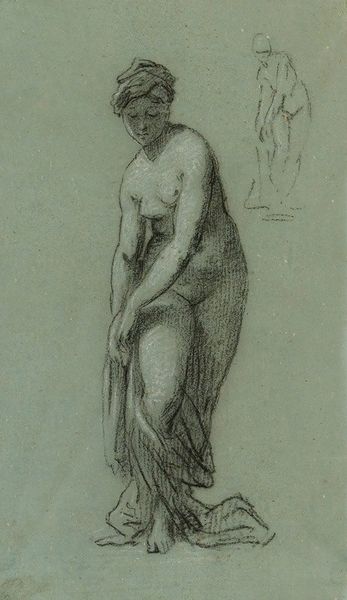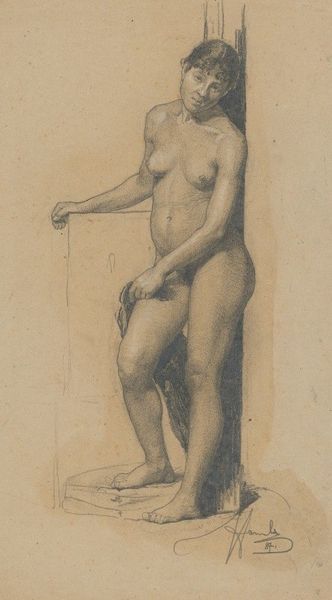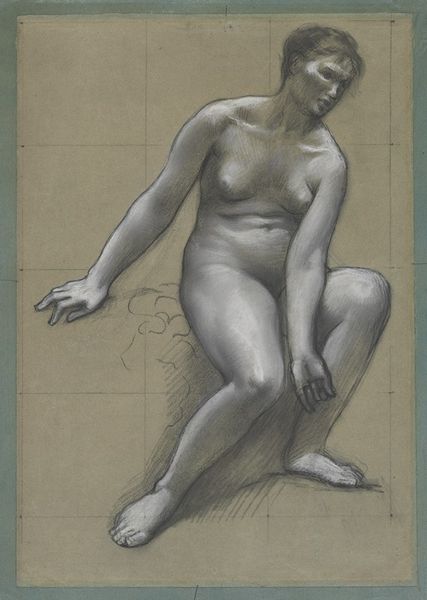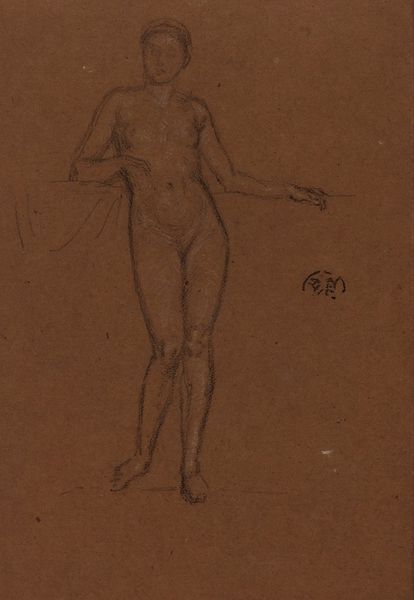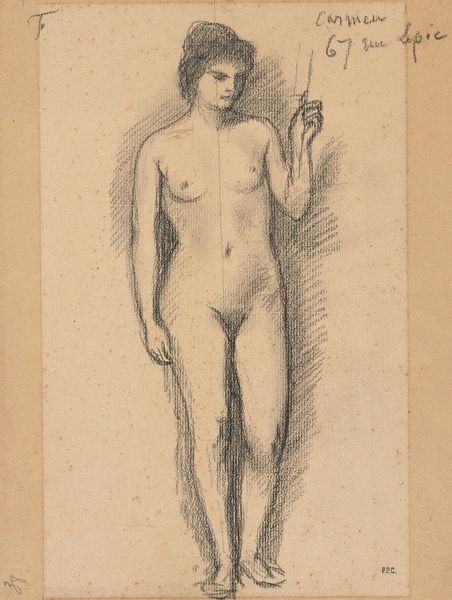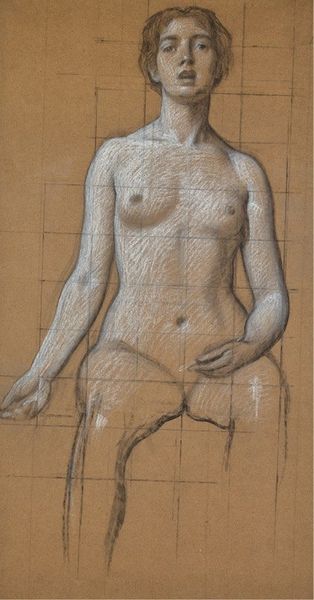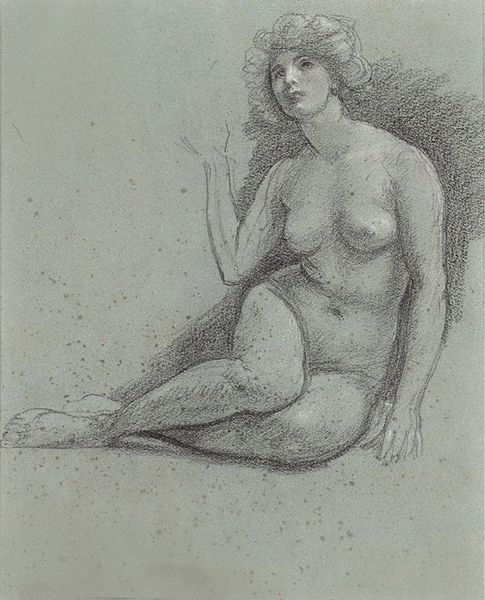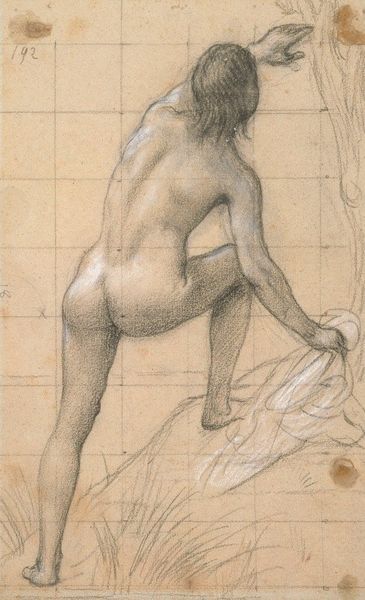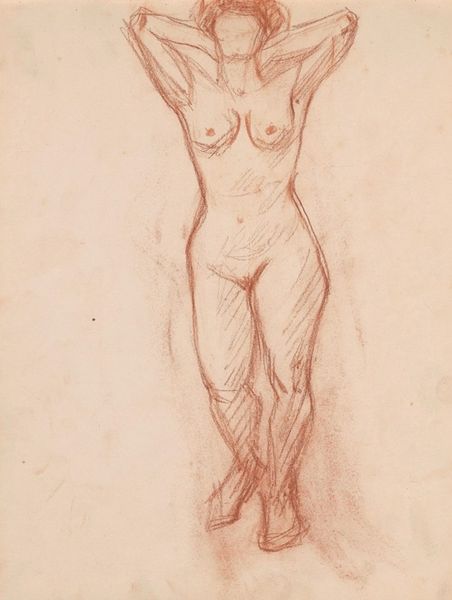
drawing, charcoal
#
portrait
#
drawing
#
pencil sketch
#
charcoal drawing
#
pencil drawing
#
portrait drawing
#
charcoal
#
academic-art
Copyright: Public Domain: Artvee
Editor: This is “Studies For The Singing Priestess In Song" by Herbert James Draper. It's a drawing, most likely charcoal and pencil, and what immediately strikes me is how deliberately Draper maps out the figure, using that grid beneath the drawing. It feels almost like a preparatory engineering sketch, and I wonder how that informed the final painting. What jumps out at you? Curator: What I see is a fascinating intersection of artistic aspiration and the social constraints of Draper's time. The academic tradition, with its emphasis on figure drawing, provided the technical framework – the very grid you mentioned, suggesting a pursuit of ideal form. But look at the title: "Singing Priestess." It hints at something more, perhaps a fascination with ritual or even an orientalist gaze common at the time, linking artistic depictions to political power structures. Editor: So you're saying it's not just about capturing beauty, but also about projecting certain ideals, or even power dynamics, onto the female form? Curator: Precisely. Think about the role of the nude in art history. It's rarely just about the human body. The figures we see often carried symbolic weight tied to religious doctrine or secular control, often presented in painting or sculpture for a predominantly male gaze within these societal constructs. How do we reconcile this technical, almost scientific, study with the romantic or even exotic imagery the title evokes? What stories do these historical influences tell us about not only Draper but also the art world of his time? Editor: It's a real mix of technical skill and societal baggage, isn't it? I didn’t consider this interplay between Draper's methods and his place in culture, it shows a lot about his priorities, and about who was setting the tone of fine art at the time. Curator: Absolutely. Art is rarely created in a vacuum. And thinking critically about the social, cultural, and political forces that shape its creation and reception helps us understand art history. Editor: Thank you, it really gives the piece a completely new context.
Comments
No comments
Be the first to comment and join the conversation on the ultimate creative platform.
